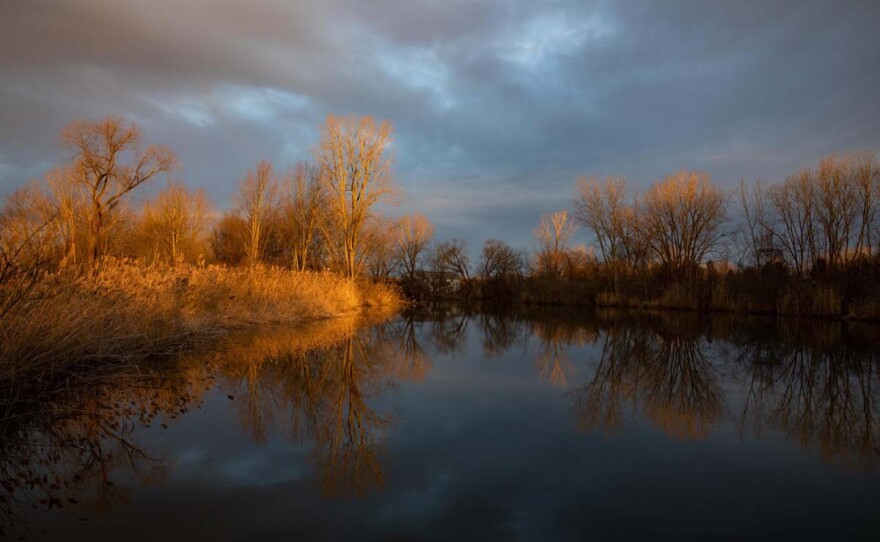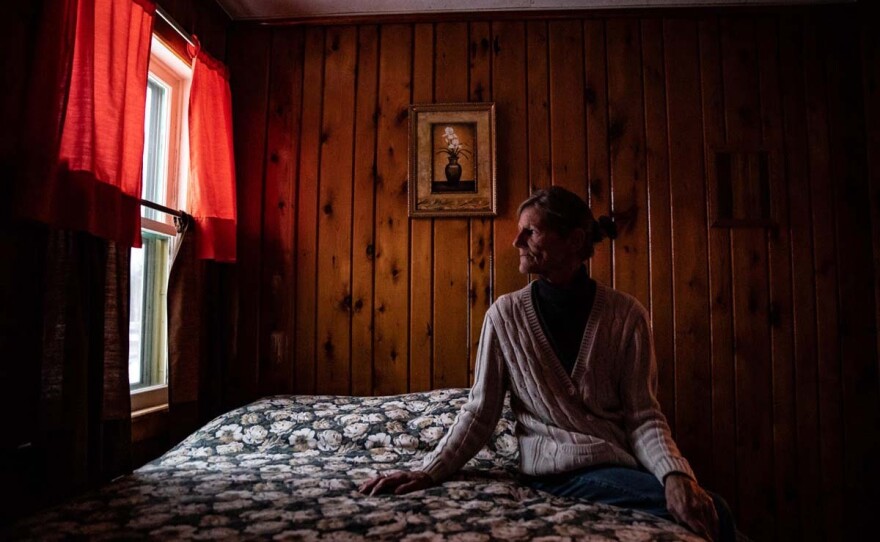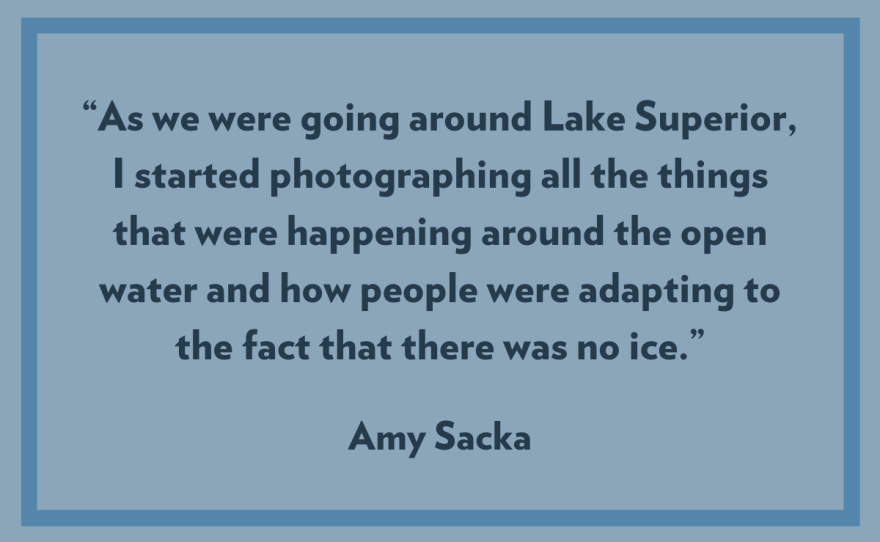In the latest edition of National Geographic, you'll find a big spread dedicated to exploring how ice coverage has dramatically decreased on the Great Lakes over the past 40 years. The photos you'll see, of not-so-solid lakes, and people navigating warmer Michigan winters, were taken by Detroit photojournalist Amy Sacka.
The shrinking ice cover is a problem for people who make their living from Michigan’s notoriously cold and snowy winters, as well as those who enjoy ice fishing, snowmobiling, and other winter activities. Sacka spent this past winter photographing the lives of some of those people.
Sacka first photographed the Great Lakes in winter for National Geographic a few years ago. A native Michigander, Sacka won a grant from the magazine after submitting photos of her father ice fishing, something he’s done since she was a kid. She remembers that “winter mornings were his” as she was growing up, where he’d return with a haul of fish before she even woke up. She travelled 10,000 miles documenting the frozen landscape and the people who populated it.
But when she went out to photograph lake ice again this past winter, she came up short. Even Lake Superior was left unfrozen. Those photos — published in the most recent edition of National Geographic — showcase a warmer Michigan, and tell the story of the people whose lives are drastically different because of it.
The lack of snow means snowmobilers don’t go out and the cabins and hotels that usually cater to them are left empty. Sacka spoke with ice fishermen who, like her father, remember a time where they could drive their car out onto the ice to get to their spot.
“It’s the fabric of our culture that, for me, is the most important thing, or the thing that I’ve seen so dramatically affect who we are as Michiganders and our identity,” Sacka said. “To see someone like my dad not be able to do what he really enjoys doing and to hear people talk about how they’re worried about not being able to pass this tradition down, that is just really sad.”
This article was written by Stateside production assistant Olive Scott.










